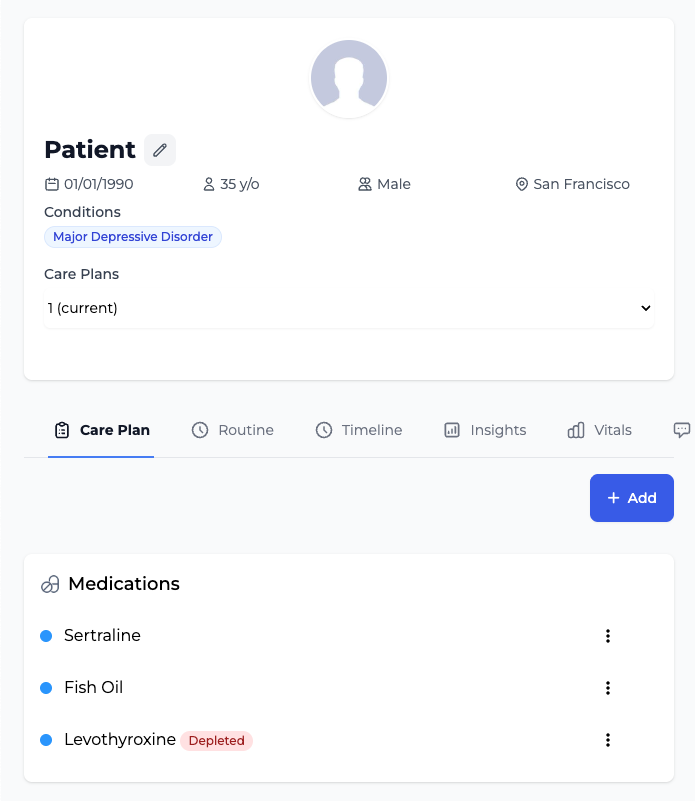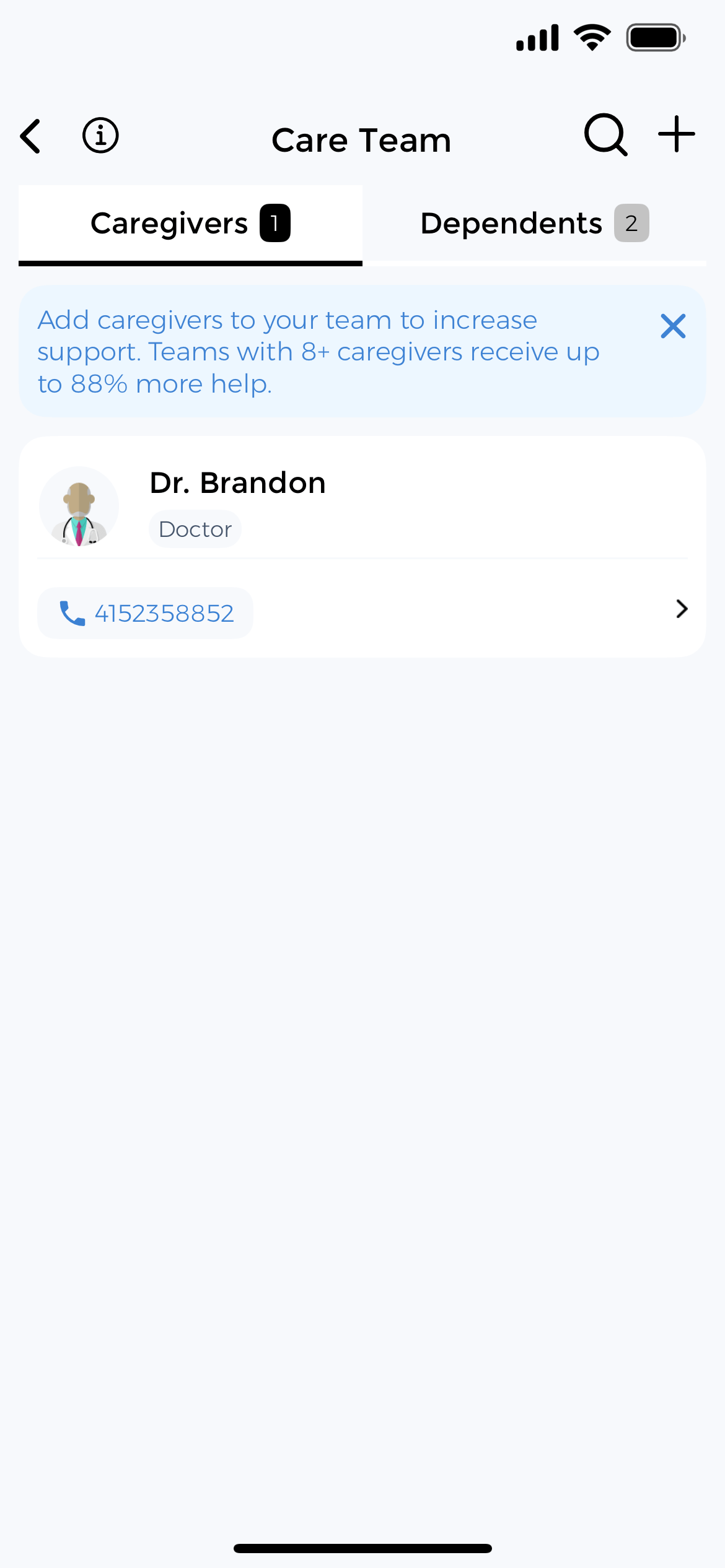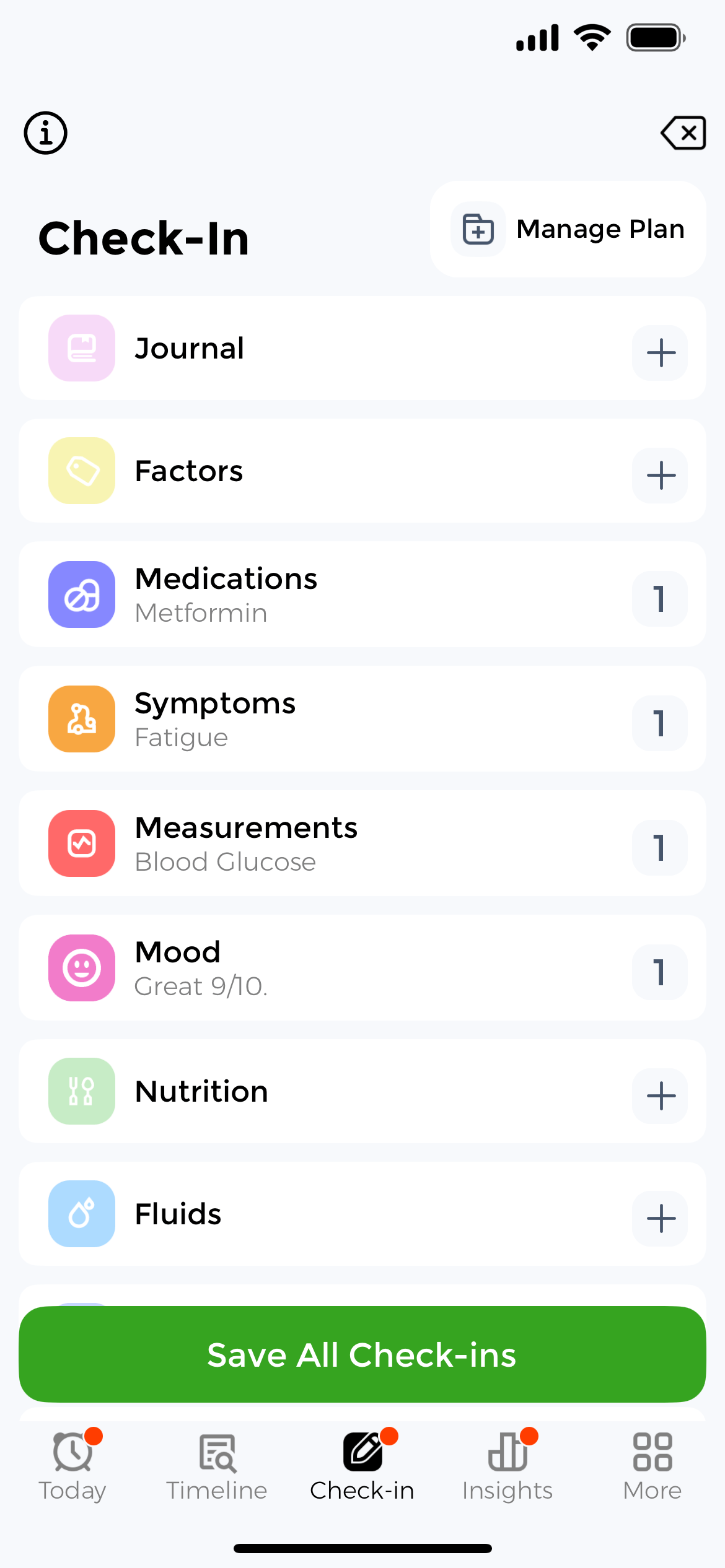Preventative Health for Employers, Providers, and Payers
Engage populations, reduce avoidable utilization, and measure ROI without adding clinician burden.
CareClinic is a preventative health platform that unifies daily self-management, reminders, care pathways, and outcomes reporting. Deploy quickly, integrate with existing systems, and give people tools to act earlier before risk turns into cost.

Purpose-Built for Enterprise Prevention Programs
Designed specifically for organizations running population health, preventative care, and early-intervention programs across diverse member groups and clinical conditions.
Employers & HR
Lower absenteeism and claims with preventative programs across cardiometabolic, mental health, and musculoskeletal needs. Provide reports for benefits evaluation.
Health Systems & Clinics
Extend care between visits with pathways, adherence support, and patient-reported outcomes. Share member reports with providers as appropriate.
Payers & TPAs
Target risk, activate members, and track outcomes to inform benefits and value-based contracts. Export de-identified aggregates for analytics.
ACOs & Value-Based Care
Improve quality metrics and reduce avoidable utilization with consistent engagement and timely interventions. Attribute results with transparent logic.
Universities & Student Health
Support mental health, lifestyle risk reduction, and adherence for students and staff. Provide lightweight onboarding and clear privacy messaging.
Occupational Health
Reduce injury risk and enable return-to-work programs with structured tracking and reporting. Document progress for EHS programs.
End-to-End Platform for Population Health Programs
From member enrollment and risk stratification to daily engagement, care pathway delivery, and measurable outcomes, all in one integrated platform.

Enroll cohorts via invite links or integration. Capture baseline risks and readiness to change; segment by condition, risk tier, or location. Configure consent to align with your privacy requirements. Use templates for onboarding communications.
Members log symptoms, habits, vitals, medications, and goals. Wearables and health data sources can sync. Nudges and reminders keep engagement high while reducing manual effort. Configure content for cohorts and languages.
Care pathways adapt based on responses and adherence. Include assessments, education, habit coaching, and escalation rules. Patients and care teams see clear next steps and progress.
Members store lab results, imaging reports, vitals, and health history in one secure location. Centralized records enable providers to monitor trends, identify early warning signs, and make informed care decisions based on comprehensive patient data.
Enable secure, HIPAA-compliant messaging between members and care teams. Facilitate timely check-ins, answer questions, coordinate care, and provide guidance without delays. Encrypted communication channels keep sensitive health information protected while maintaining accessibility for authorized users.
Comprehensive Health Records
Complete personal health record features that members and care teams use to track, coordinate, and improve preventative care outcomes.
Appointments
Manage visit schedules, reminders, and follow-ups. Reduce no-shows with automated alerts and help members prepare for preventative screenings and check-ups.
Care Plans
Structure goals, tasks, and milestones across conditions. Enable care teams to assign evidence-based interventions and track member progress toward health objectives.
Immunizations
Track vaccine history and booster schedules. Maintain compliance with preventative immunization guidelines and send timely reminders for upcoming vaccinations.
Labs & Imaging
Organize results and support care decisions. Store test results in one place and help providers identify abnormal trends that require preventative intervention.
Health Events
Track surgeries, hospitalizations, and outcomes. Document major health events to inform future care planning and identify members who may benefit from enhanced support.
Care Team
Coordinate providers, caregivers, and emergency contacts. Ensure seamless communication across the care team and maintain accurate provider directories for referrals.
Daily Health Trackers
Empower members with intuitive tracking tools that capture daily health patterns, support adherence, and provide actionable insights for preventative care programs.

Medication Tracker
Track adherence patterns and identify missed doses with visual reports.
Structured 12-Month Implementation
Deploy your prevention program in proven phases. Start with foundation and governance, followed by targeted pilots, continuous optimization, and enterprise-wide scale.
Phase 1: Foundation
Program governance, baseline metrics, cohorts, consent, and initial integrations. Configure care pathways and reporting.
Phase 2: Pilots
Run pilots in priority domains such as hypertension, diabetes, infection risk, or NICU follow-up. Gather feedback and iterate.
Phase 3: Optimization
Expand to more units and refine nudges, content, and thresholds. Strengthen dashboards and export automation.
Phase 4: Institutionalize
Embed KPIs into scorecards. Train staff, standardize workflows, and maintain continuous improvement cycles.
Enterprise-Grade Privacy, Security & Governance
Protect member data with enterprise-level controls, transparent consent management, and comprehensive audit capabilities that meet regulatory requirements.
Privacy
HIPAA-compliant consent workflows, data minimization principles, and configurable PHI sharing rules. De-identified exports for population analytics and GDPR-ready controls.
Security
AES-256 encryption at rest, TLS 1.3 in transit, SSO/SAML integration, role-based access control (RBAC), comprehensive audit logging.
Governance
Configurable data retention policies, regional data residency options, comprehensive audit trails, business associate agreements (BAA), and seamless data portability
Consent
Granular consent management workflows, customizable authorization levels, attribute-based access control (ABAC), and complete data export capabilities aligned with right of access.
Clinically Reviewed
CareClinic supports measurement-based care through evidence-informed patient-reported outcomes, adherence analytics, and clinical reporting that seamlessly complements provider workflows.
Evidence-Informed Engagement
Programs can incorporate validated assessments where appropriate, with configurable frequencies and thresholds to trigger follow-up. Reports help patients and clinicians communicate change between visits.
Clinically Reviewed & Researched
For Clinical and Non-Clinical Teams
Whether operated by clinicians, health coaches, or case managers, CareClinic centralizes member input, prompts next actions, and enables secure sharing of reports with the care team.
Proven ROI & Common Considerations
Data-driven prevention programs consistently attribute measurable savings across clinical domains. Below are ROI benchmarks and key evaluation topics for business and clinical teams.
Cardiovascular Prevention
15-25% lower ICU days and procedures via earlier control. Improve blood pressure control and statin adherence with timely nudges.
Diabetes Complications
20-30% fewer readmissions and complications with better self-management. Structured logging and meal or activity support help maintain A1C improvements.
Infection & Readmissions
35-45% improvement in discharge follow-through. Discharge checklists and reminders increase completion of follow-up within 7 to 14 days and lower HAIs.
Cancer Screening
18-28% higher screening uptake. Age and risk prompts raise screening rates and close care gaps, enabling earlier detection and treatment to avoid late-stage cost.
Maternal & Neonatal
12-22% lower NICU utilization with timely prenatal and antenatal support. Prenatal tracking and symptom alerts surface issues early for escalation.
Lifestyle Interventions
25-40% improved adherence. Habit coaching and simple streaks build durable behavior change that reduces chronic admissions as risk factors improve.
Accessibility & Language
Mobile-first design with large-text options and full internationalization. Localized UI and content available in 15+ languages to serve diverse populations.
Data Residency
Hosted on CareClinic-managed servers by default; your data stays on our infrastructure. If your policy requires regional hosting, we can evaluate moving workloads/data to your preferred region or account during implementation.
Reporting & ROI
Agree up front on how each metric is calculated (who is counted and over what time). Use conservative before/after or matched-cohort comparisons, document assumptions, and review with finance and quality so everyone trusts the numbers.
Note: Values are illustrative for planning. CareClinic provides measurement tools; outcomes depend on your population and operations.
Conditions and Programs
Deploy single-condition journeys or multi-condition programs across populations.
Cardiovascular & Hypertension
Support better blood pressure control, medication consistency, and reduced cardiovascular events through daily vitals tracking and lifestyle interventions.
Diabetes & Metabolic
Help members achieve more stable glucose levels, maintain healthier A1C readings, and prevent complications through nutrition, activity, and medication tracking.
Respiratory (COPD/Asthma)
Enable fewer exacerbations, better symptom control, and reduced emergency visits by tracking triggers, medication adherence, and environmental factors.
Maternal & Neonatal
Drive healthier pregnancies, earlier risk identification, and smoother postpartum transitions through prenatal monitoring, nutrition guidance, and vital tracking.
Oncology Support
Facilitate better side-effect management, treatment adherence, and quality of life during cancer care with symptom monitoring and survivorship wellness planning.
Mental Health
Promote emotional stability, better sleep patterns, and reduced crisis episodes through mood journaling, stress tracking, and therapy adherence support.
Musculoskeletal
Accelerate recovery timelines, restore mobility, and reduce reinjury rates with pain monitoring, rehabilitation goal tracking, and return-to-work protocols.
Multi-Condition
Coordinate care across multiple chronic conditions, minimize medication conflicts, and reduce overall disease burden with integrated care plans spanning 3,500+ conditions.
FAQ for Employers, Providers & Payers
Clear answers to common evaluation questions.
CareClinic uses encryption, role-based access, and configurable consent flows. Administrators define data visibility, retention, and export options (including de-identified aggregates) to align with policy and regulation.
CareClinic supports standards-based authentication and flexible data exchange. Common approaches include secure cohort imports/exports and optional device or health data integrations. Integration scope is defined during implementation.
CareClinic helps capture member engagement and preventive actions (e.g., adherence, screenings, PROs) and produces program-level reports and exports. Measure calculation and submission still depend on payer and provider definitions and source data (e.g., claims/EHR).
CareClinic enables cohort stratification, early interventions, and outcome tracking to support value-based goals. Attribution methods follow payer/provider rules; we recommend conservative approaches with transparent assumptions reviewed by finance and quality teams.
CareClinic helps organizations track engagement and outcomes, typically targeting medication adherence, symptom improvement, screening completion, and avoidable utilization. Actual results depend on baseline risk, program design, and sustained participation.
CareClinic supports tailoring by condition, risk tier, language, and culture. Teams often start with templates and iterate using live program data.
CareClinic typically requires a program sponsor, an operational owner, and a technical contact for cohort/data tasks. We provide templates for workflows, communications, and reporting.
CareClinic recommends agreeing on metric definitions up front and using conservative before/after or matched‑cohort comparisons. We document assumptions and review them with finance and quality so stakeholders trust the results.
